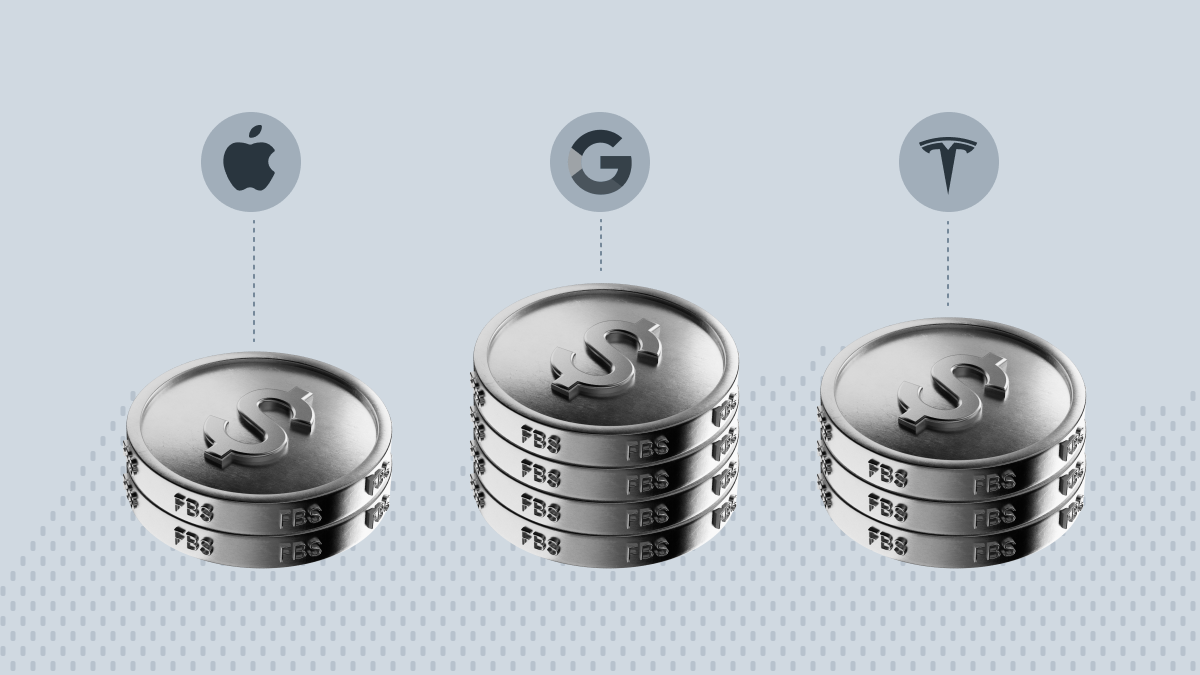7. Manage your stock portfolio
While neither your portfolio nor your mental health will benefit from constant monitoring, there are times when you do need to check on your investments. It’s wise to take a look at the portfolio you’ve built of individual stocks and other instruments several times a year.
If your life circumstances have changed, you may need to adjust your strategy. If some of your assets are underperforming, you may need to re-evaluate your future with them. Many also find it a good idea to add money regularly.
Best stocks for getting started

If you’re only starting to invest, it is highly inadvisable to chase high-risk stocks in hopes of a quick payoff. It can be tempting but what you should be prioritizing in your investments at this point in your journey is stability and a solid performance history.
There are a few types of stocks that beginners will find easier to understand and manage:
Blue-chip stocks — Stocks of large companies with a reputation for economic power and consistent performance even in volatile times.
Dividend stocks — Stocks of companies that pay dividends on a regular basis is a good idea for newbies. Dividends are income that you can reinvest.
Growth stocks — Stocks of high-growth and high-risk companies. If you’re interested in getting into this field, you should stick to sectors with long-term growth potential, like tech.
Defensive stocks — Stocks that will stabilize your portfolio during volatility are ones in sectors that have consistently shown stability in rough economic seas.
How to diversify your investments
Diversify within asset classes — Start by buying a mix of assets within a single class. Avoid being too invested (literally and figuratively) in one stock, gain exposure to a range of stocks across different industries. You can also look for sectors that complement each other to stabilize your investments.
Explore international markets — If your home market struggles, learn how to invest in stocks in international markets. Investing in foreign markets comes with its own rules and regulations, so take your time to research thoroughly.
Cross-asset diversification — Try to buy different types of assets. Indices, currencies, and commodities are all alternative investments that behave differently from traditional assets and can provide a buffer against market volatility.
Key considerations for a diversified portfolio
When incorporating alternative investments, remember that each type has unique characteristics that go well with your traditional holdings. Here’s what to keep in mind:
Time horizon and liquidity — Your time horizon is how long you plan to hold an investment before it becomes liquid, meaning you can withdraw it. Traditional investments like stocks are generally liquid, so you can cash out whenever you need to. Alternative investments, however, often come with longer time horizons and may be harder to sell quickly. For example, commodities appreciate in value over a long period.
Industry and market variety — To strengthen your diversification, penetrate into various industries and markets. In currencies, for example, consider adding options like the euro, yen, or Swiss franc to balance against dollar fluctuations.
Risks and threats — The goal of diversification is to spread risk. Generally, investments with longer time horizons are less risky, as they have more time to recover from downturns. A mix of short-term and long-term assets can give you both stability and flexibility.
Common mistakes to avoid when investing in stocks

Some things in investing only come with time, but if you’re just starting out, learning from common mistakes can serve as an “anti-roadmap” to keep you on track. Here are some things to steer clear of:
Investing without understanding
All experts warn against putting money into companies you don’t fully understand. If you’re unsure, start with indices that spread risk. But if you’re drawn to individual stocks, make sure you truly know what each company does and how it makes money.
Getting attached to a company
It’s easy to root for a company you invest in, especially when it’s doing well. But remember that your goal is to grow your money —not fall in love with a brand. If the company’s fundamentals shift in a concerning direction, be prepared to reconsider your investment.
Expecting quick wins
You shouldn’t try to purchase stocks as some get-rich-quick scheme. Instead of expecting fast returns and ending up with disappointment and risky decisions, set realistic expectations and trust the process of steady, long-term growth.
Investing too often
Constant buying and selling may seem active and productive, but frequent trades come with costs. Transaction fees, taxes, and missed long-term gains can all eat into returns. Stick with quality investments and let time do its work.
Trying to time the market
Timing the market is incredibly hard, even for the experts. Research shows that most of a portfolio’s success comes from good asset allocation, not trying to catch every high and low.
Holding onto losses
Waiting for a stock to get back to even before selling is a common trap. If a company’s fundamentals have changed or it no longer fits your goals, move on and free up your money for better opportunities.
Letting emotions lead
Emotions like fear and greed are quick to surface in investing, but they are followed by poor decisions. Markets will always have ups and downs, but staying calm and focused on your long-term plan generally pays off.
FAQ
How much money do I need to start investing in stocks?
As a beginner, you can start investing in stocks with $100 to $500, which is enough to diversify your investments and try out different strategies. However, you can also begin with just $5-$10.
What is the difference between a stock and a mutual fund?
A stock represents ownership in a single company, and a mutual fund pools money from many investors to buy a diversified portfolio of various assets. Investing in stocks is riskier but potentially more profitable, as your investment depends on the performance of one company. Mutual funds spread risk across multiple investments.
Is it better to invest through a broker or a robo-advisor?
A broker will give you access to more investment options and more control over your portfolio, and will also usually cost more. Robo-advisors offer automated investment management at a lower cost, but they lack flexibility and personal involvement.




